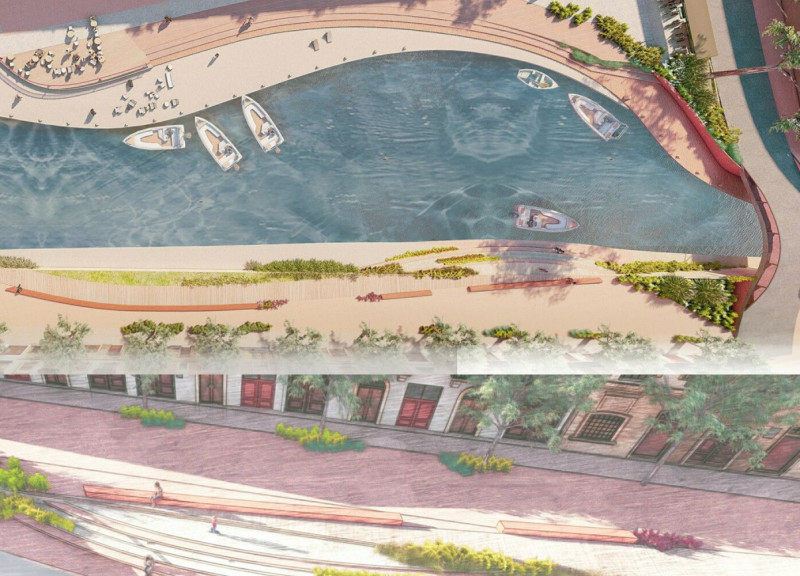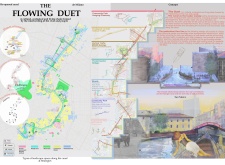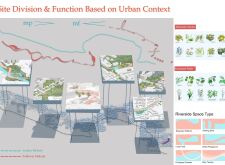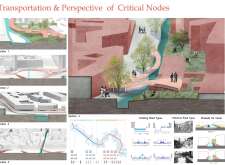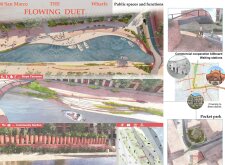5 key facts about this project
At its core, the project represents a modern interpretation of traditional values. It functions as a multipurpose space, accommodating various community activities, including recreational areas, collaborative workspaces, and cultural exhibitions. The design prioritizes versatility, enabling the space to be adapted for different events and gatherings. This adaptability is a significant factor in promoting social interaction and enhancing the sense of community within the area.
The exterior of the building showcases a blend of materials, including local brick, glass, and timber, which together create a warm, welcoming facade. The use of local brick not only connects the structure to the historical context of the region but also provides durability and weather resistance. Large glass panels invite natural light into the interior, fostering an open and airy feel, while also offering transparency that encourages visual connection with the surrounding environment. Timber elements are incorporated to soften the overall appearance, enhancing the tactile experience of the space.
Key design features include a central courtyard that acts as the heart of the project. This outdoor area serves multiple purposes, from hosting public events to providing a tranquil escape for individuals seeking quiet reflection. Surrounding the courtyard are various breakout spaces, strategically placed to allow for both private and public interactions. The careful arrangement of these areas encourages movement throughout the building while maintaining a clear sense of direction and purpose.
Unique to this project is the emphasis on sustainability and environmental consciousness. The design integrates a green roof system and incorporates rainwater harvesting techniques, reflecting a commitment to reducing the building's ecological footprint. This innovative approach demonstrates an understanding of the current challenges faced by urban environments, particularly regarding climate change and resource management.
Landscaping plays a crucial role in the design concept, with native plant species chosen to enhance the natural beauty of the surroundings while promoting biodiversity. Pathways weave through the landscaping, guiding visitors seamlessly from one area of the building to another while fostering an appreciation for the natural environment. This connection between the architecture and the landscape is intentional, creating a unified experience for users and enhancing their overall engagement with the site.
In addition, the project pays close attention to the interior layout, prioritizing user experience. Open floor plans allow for flexible use of space, and movable partitions enable easy reconfiguration according to the needs of various groups. This design strategy not only maximizes functionality but also encourages collaboration and creativity among users.
The architectural concepts explored in this project exemplify an innovative approach to contemporary urban design. By synthesizing local context, sustainable practices, and community-oriented features, the design offers a model for future developments aimed at enriching urban life.
To gain a more detailed understanding of the project, including its architectural plans, sections, designs, and ideas, readers are encouraged to explore the provided project presentation. This deeper dive will offer valuable insights into how the project successfully combines form and function to foster a robust and inclusive community space.


